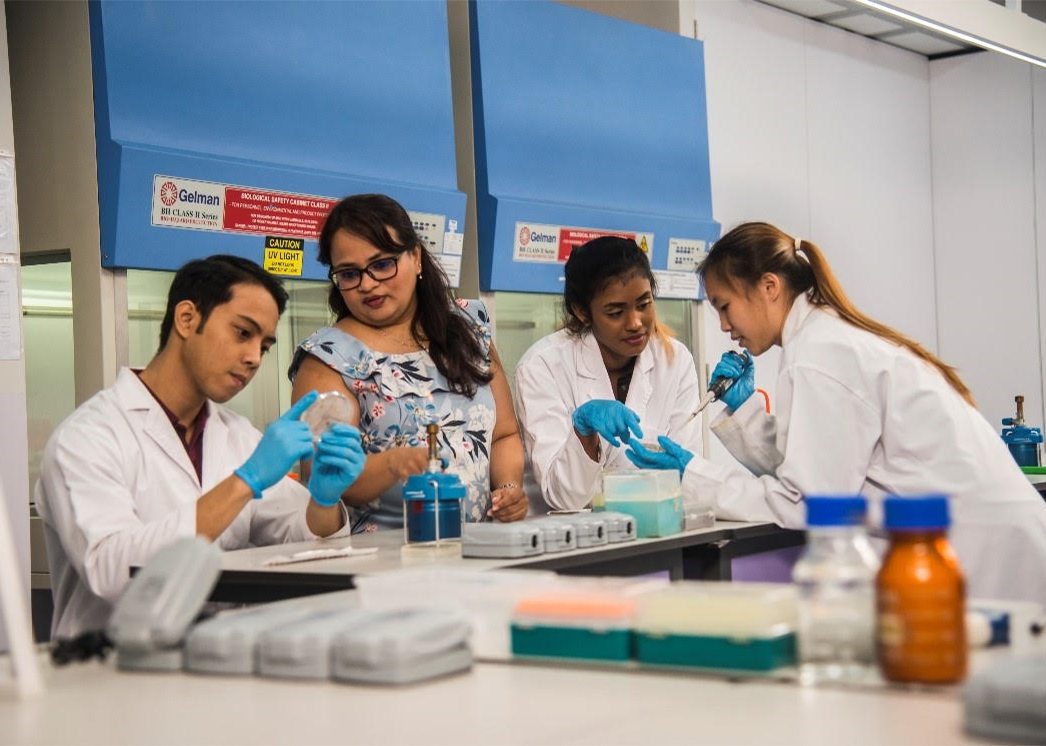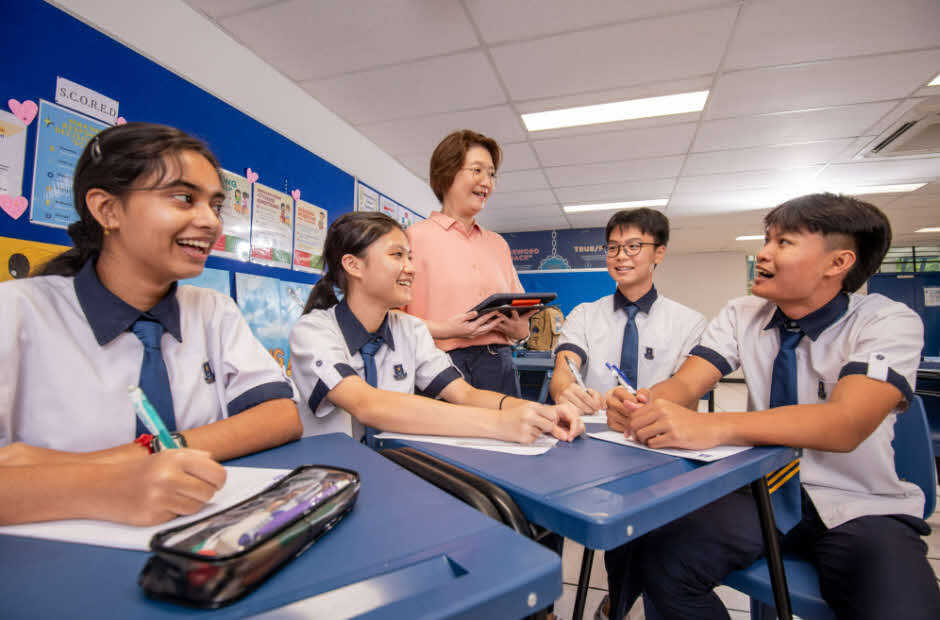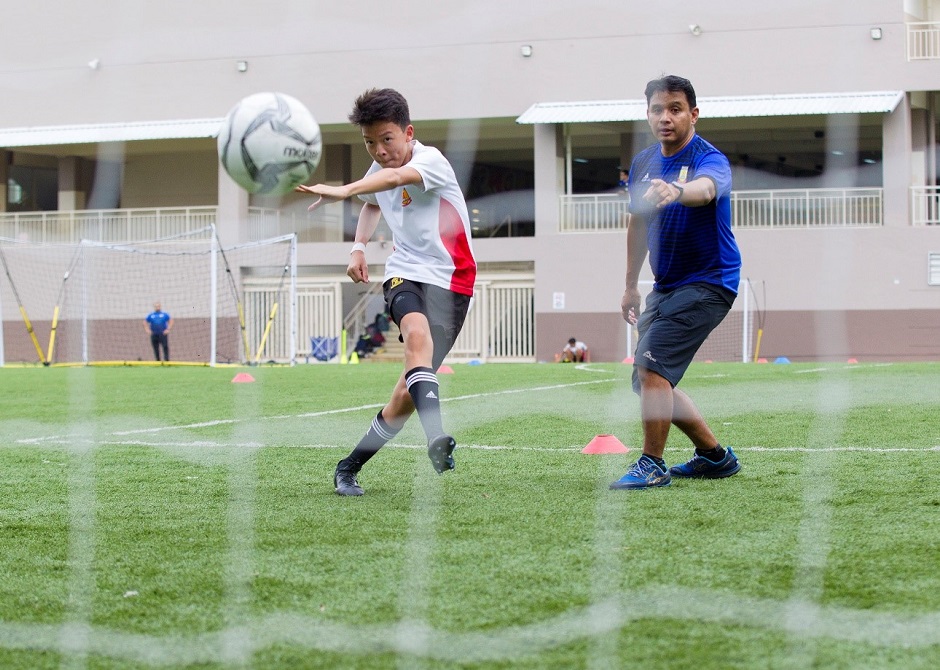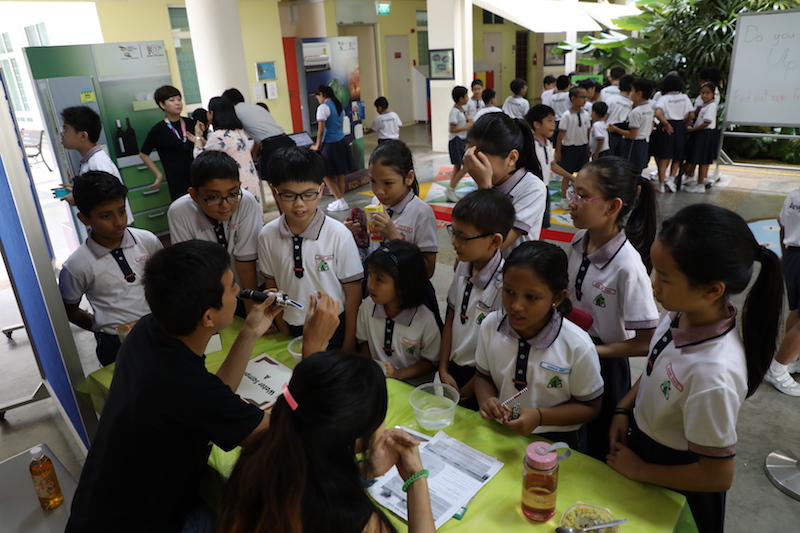Dr Janaki Hemant Shah, Republic Polytechnic, President’s Award for Teachers 2019 Finalist
“You may fail at something, but you don’t have to be defeated by it,” is what Janaki, a lecturer at Republic Polytechnic’s School of Applied Science, likes to tell students in her Genetics and Structural Biology class. One of the most important things that science can teach you is that in every failure, there is a lesson to be learnt.”
“The skill of the scientist doesn’t lie in getting the experiment right the first time. A good scientist is one who learns from, and improves their experiments with each attempt,” says Janaki.
To get her students to understand the importance of learning from failure, Janaki has them write about the things that went wrong in an experiment in their reflection journal. “Every scientist must analyse the cause of failure to improve the next time,” says Janaki. “Reflecting on mistakes made in the lab is an essential skill for students to acquire scientific rigour.”
“I want my students to see failure as an opportunity to learn, and a step closer to the result they are pursuing,” says Janaki.
From necklaces to birds
The modules Janaki teaches are not easy ones – so it’s important for her students not to give up.
In Structural Biology, which deals with small molecules, “the students can’t always visualise what I’m talking about, so it could be challenging for them to be interested.”
To bring the subject matter to life for students, Janaki uses creative props like magnetic necklaces as teaching materials. “Those make excellent models for proteins because I can get them into whatever shape I want. It helps students see how it works three-dimensionally and they can play around with it.”
Another secret weapon Janaki uses to keep students engaged is cute animals.
“Just recently, I was trying to teach them something about evolution and I could see their eyes glazing over,” she shares. “So I told my students to go look up the kakapo on the internet. It is a flightless parrot that lives in New Zealand, and it flourished until humans introduced dogs and cats into its habitat—there are now less than 150 known adult kakapos left.
As the students ‘oohed and aahed’ over the bird, Janaki explained how the kakapo is endangered because it was unable to evolve and adapt to new predators in its habitat. Her message hit home.
Students in Janaki’s Genetics class love the examples of rare hereditary diseases she often shares. Apart from morbid curiosity, students are thrilled that by studying these diseases, they are among a select group of people in the world who actually understand that particular condition.
Questions that teach
In the spirit of scientific inquiry, Janaki encourages her students to ask questions—even if they may be beyond the given topic—and doesn’t hesitate to pose them challenging questions of her own.
Janaki’s class thrives on questioning and discussions. “In this day and age, we want students to learn to question ‘facts’ and develop good analytical skills,” she says. “If I ask them a tough question and they don’t know the answer, they have to at least try to find out. That’s how they learn.”
Sometimes, the class discussions go beyond the given topic.
Once, she was using an example of Down syndrome to teach students about medical conditions due to chromosomal abnormalities. The conversation shifted to Turner syndrome, as a student’s sister suffered from that.
Instead of insisting that students stick to the topic, Janaki welcomed the diversion and let that conversation flow.
“In investigating this, they learned all the concepts I needed them to learn: They learned about chromosomes, about why such syndromes happen, and about diagnostic methods.
“I love it when that happens in my class,” she says. “The more they control how and what they learn, the more engaged they will be.”
Janaki also gets creative with teaching methods to ensure that students can follow dense and complex topics.
For some challenging subjects, she’ll abandon the usual format in favour of interactive seminars, where she teaches one part of the concept, then stops to let it sink in. Before she moves onto the next segment, she gives students a quiz or asks them to explain the concept to each other.
She is also exploring the use of virtual reality to teach students about cytogenetics, a branch of genetics that deals with how chromosomes relate to cell behaviour.
According to Janaki, the classroom experience has improved considerably since she introduced these methods.
Ask ‘Why’
As focused as she is on delivering her lessons, Janaki goes above and beyond to look out for students experiencing personal struggles.
“Students can have challenges in their lives that we know nothing about, that we understand nothing about,” she says. “This can affect their ability and willingness to learn in class.”
Early in her career, she had a student who slept a lot in class, to the point where she asked him in frustration, “Why are you coming to class every day and sleeping? How are you going to pass your exams?”
His response was that he was working till 3 am every night because he was the sole breadwinner in his family and he had younger siblings to take care of. This was a sobering answer for her. She was able to point him in the direction of getting financial assistance, which helped him out, but the student and his story were an important lesson for her and stuck with her.
“My big lesson from that is when a student is not paying attention or is unable to learn well, it’s important to ask why.”
Janaki wins her students’ trust by being there for them and not judging them.
“Often, when they are stressed or troubled, all they need is a sounding board. They just need a little bit of advice to find direction.”
“However, when they are getting into bad company or bad habits, then you need to step in and be the old fashioned teacher and say — ‘you need to stop this’.”
Ultimately, she sees her role as that of a facilitator, accompanying her students on their learning journey, not lecturing them. “The students have to go through the experience themselves, but I’m there to help, guide, and support them and offer them a listening ear.”
“What keeps me going is when I see my students learning and exploring, and having ‘aha’ moments,” Janaki says. “That’s the most joyful part of my job.”






